Article written by Georgia Diaconsescu, Product Marketing Manager at What3Words
My name's Georgia Diaconescu and in this article, I'm going to talk about personas with jobs. I'm going to share the conclusion right off the bat - personas have a job.
I’ll share an actionable nine-step plan & learnings around enriching personas with jobs-to-be-done.
My background
I've worked both on B2B and B2C - spoiler alert - if you're in B2B, you're still selling to people so personas are still important, and they still have a job.
As you can see below my career is a whole mix of things like augmented reality, beauty and luxury - FinTech as of two months ago - but the one thing they have in common is personas that have a job.
This is one of my favorite gifs of all time because this little kid has essentially one job, and she failed at it. I absolutely love it.
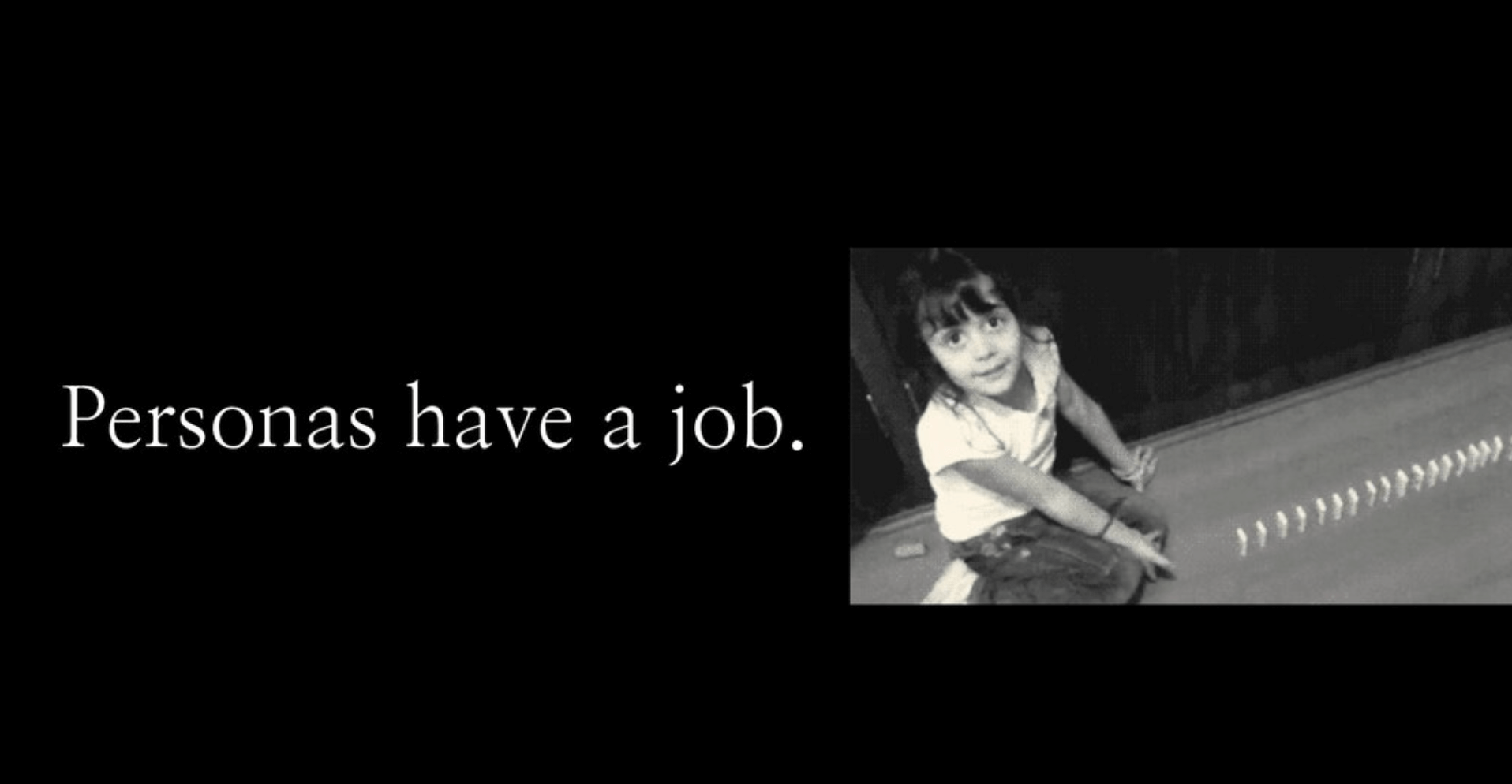
The blind men and the elephant
Before I dive into everything I want to want to cover, I'm going to start with the old Buddhist story of the blind men and the elephant.
Try to imagine six blind men being invited in a courtyard and they all have to describe what they see. They're asked to perceive an elephant. Remember, they're blind so they don't really know it's actually an elephant. Each of them is trying to reach out and understand through their perception what exactly it is they have in front of them.
One of them touches the ear and thinks, "I think this is a fan. It's pretty windy around here". Another one touches the tusk and thinks "I'm pretty sure this is a spear" and another one touches the tail and he's like, "Trust me, guys, it's a rope".
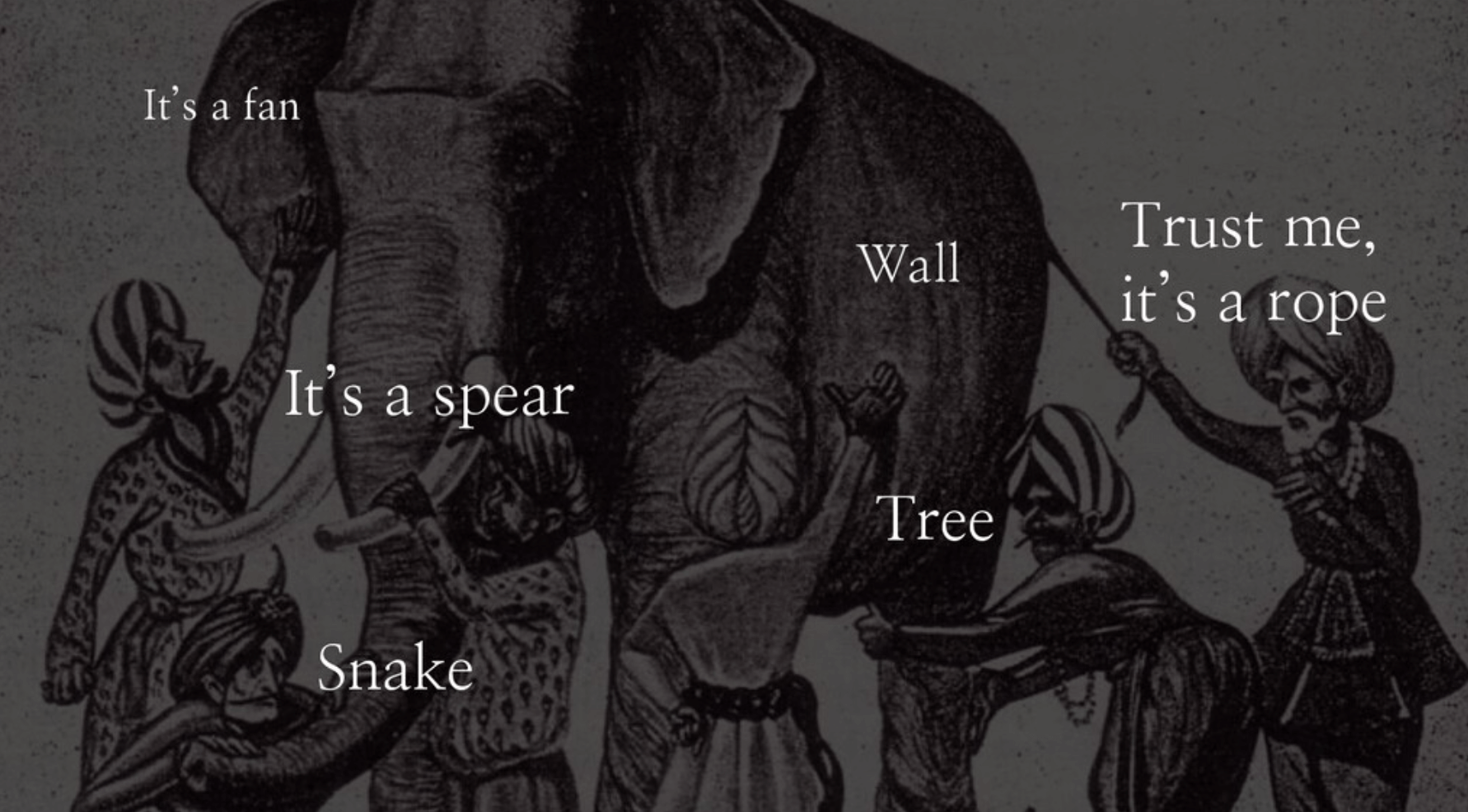
None of them actually came to a conclusion. That leaves them really, really confused.
What went wrong here?
They're all focused on their own experience, focused on their own perception of what was going on around them. Isn't it how value proposition brainstorms work?
Value proposition brainstorming
Doesn't everybody love a good brainstorm?
You just have an empty wall, a bunch of post-its, and let's just think of a value proposition. That doesn't work. This is because what gets us in trouble is not really what we don't know, it's what you know for sure that just ain't so.
This quote is often misquoted to Mark Twain but when I Googled it, I realized it's actually Lev Tolstoy. But it proves the point that you always need to double-check what you think you know:
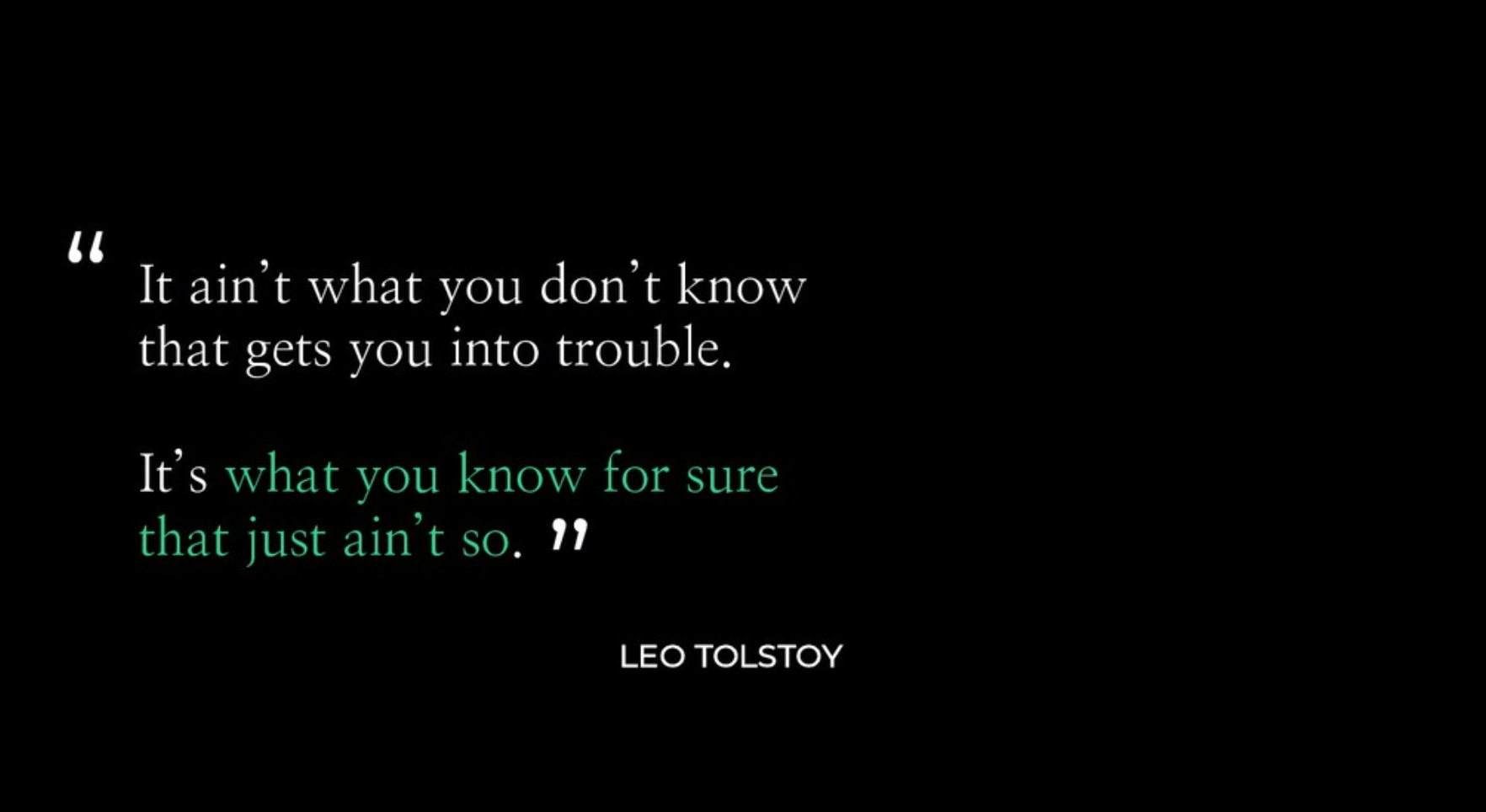
Maybe that's why seven out of 10 businesses fail in the first 10 years.
It's a really powerful statistic and I had the privilege of working in two unicorns, one of them wouldn't really call itself unicorn, but it's on the way and one of them failed spectacularly because they didn't really nail the value proposition. They didn't really know what job they were actually doing for their customers.
Personas are great: a single perspective amongst many
This is not an article about how you should ignore your personas. I think personas are great. But they're a single perspective amongst many.
Users are dynamic
In this article, I'm here to encourage you to enhance all the awesome work you're doing with personas with another framework to recognize the fact our users are dynamic, and they're always on a journey.
Personas tend to be a little bit static, they tend to capture what a user or consumer feels and does and is at a certain point in time in their life. The conclusion is personas have a job.
Jobs to be done
Going back to the framework that I want to talk about - jobs to be done. It's a framework that's been pioneered by two different people, Clay Christensen is one of them, developed it in more detail for Harvard Business School, he wrote The Innovators Dilemma.
Basically what jobs to be done says is your customers are not there to buy your product, I'm so sorry. They're hiring your product to get a job done and they fire it if you don't.
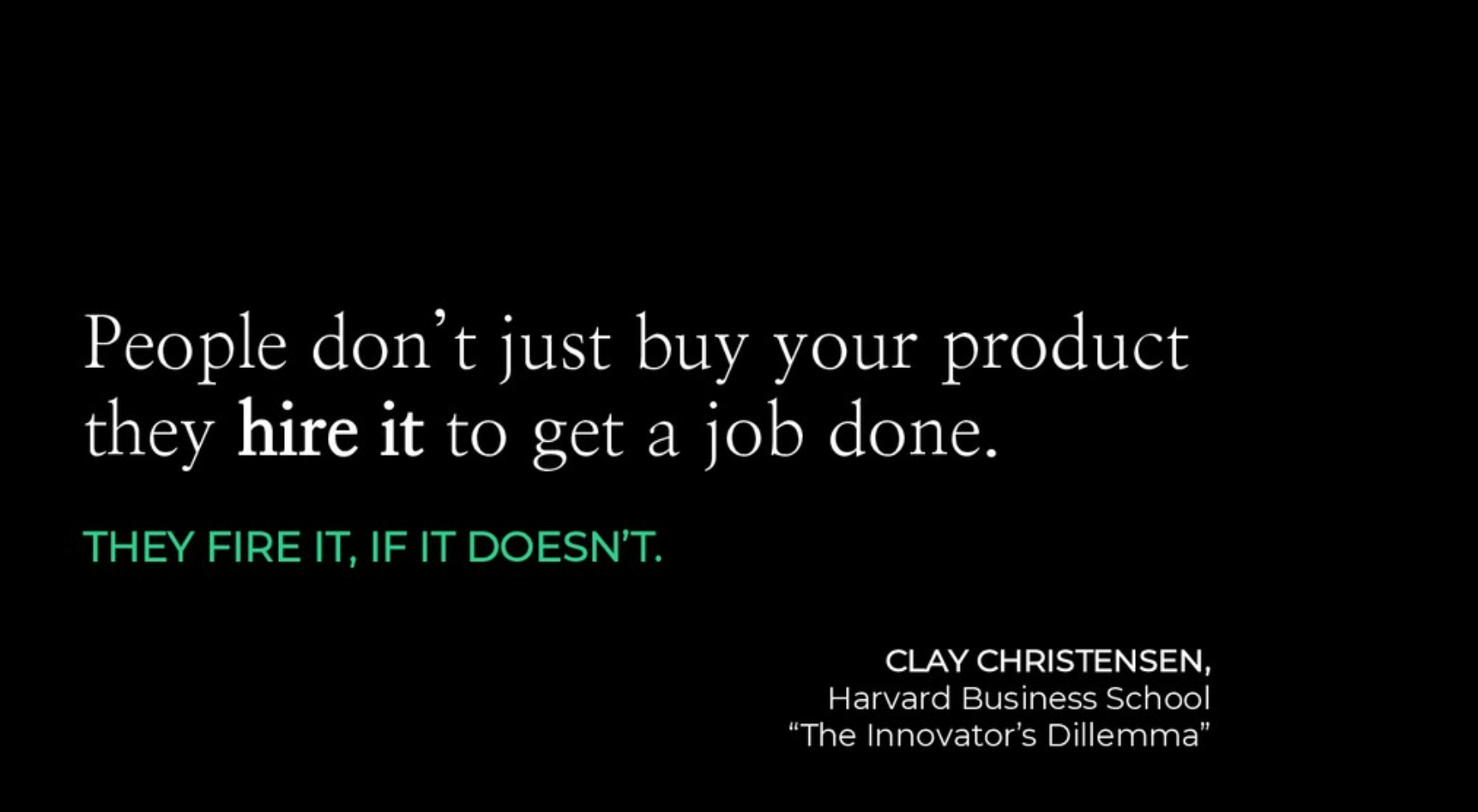
Let that sink in for a second.
What are jobs?
Jobs are actually functional actions with social and emotional components. Two things to remember here are:
- They're stable over time, they don't really change as much.
- They're solution agnostic so technically, a job can be satisfied in a multitude of ways.
Sharon & Jay
Let's take an example, Sharon and Jay need to get somewhere on time. If you look at Sharon and Jay, you'd probably think they're pretty different personas, they probably come from different backgrounds, they're obviously different ages.
Maybe personas are not really going to help us identify what we need to do here. They both use the same product, Google Maps. So you have different personas, same job, same product.
Their job to be done, essentially, is to get somewhere on time and Google Maps is just one way of achieving that.
Roman citizens
What do Roman citizens in second century BC have in common with you reading this article?
Their job is to be entertained and that is definitely my job here.
Writer/Instablogger
What about a writer or an Insta blogger?
Their job is to express their creativity and there are multiple ways of doing that.
Personas change but the job is the same
What I'm trying to get at is that personas change but the job stays the same.
Two components of value props
Now each value proposition has two components.
It has:
- A beneficiary aka a persona, and
- A job.
Beneficiary
The beneficiary or the persona gives us a lot of really interesting insights, demographic data, geographic data, psychographic, all that.
Job to be done
But the job to be done gives us a clearer picture around the behavioral insights, the buying patterns, the experience, and the end goals.
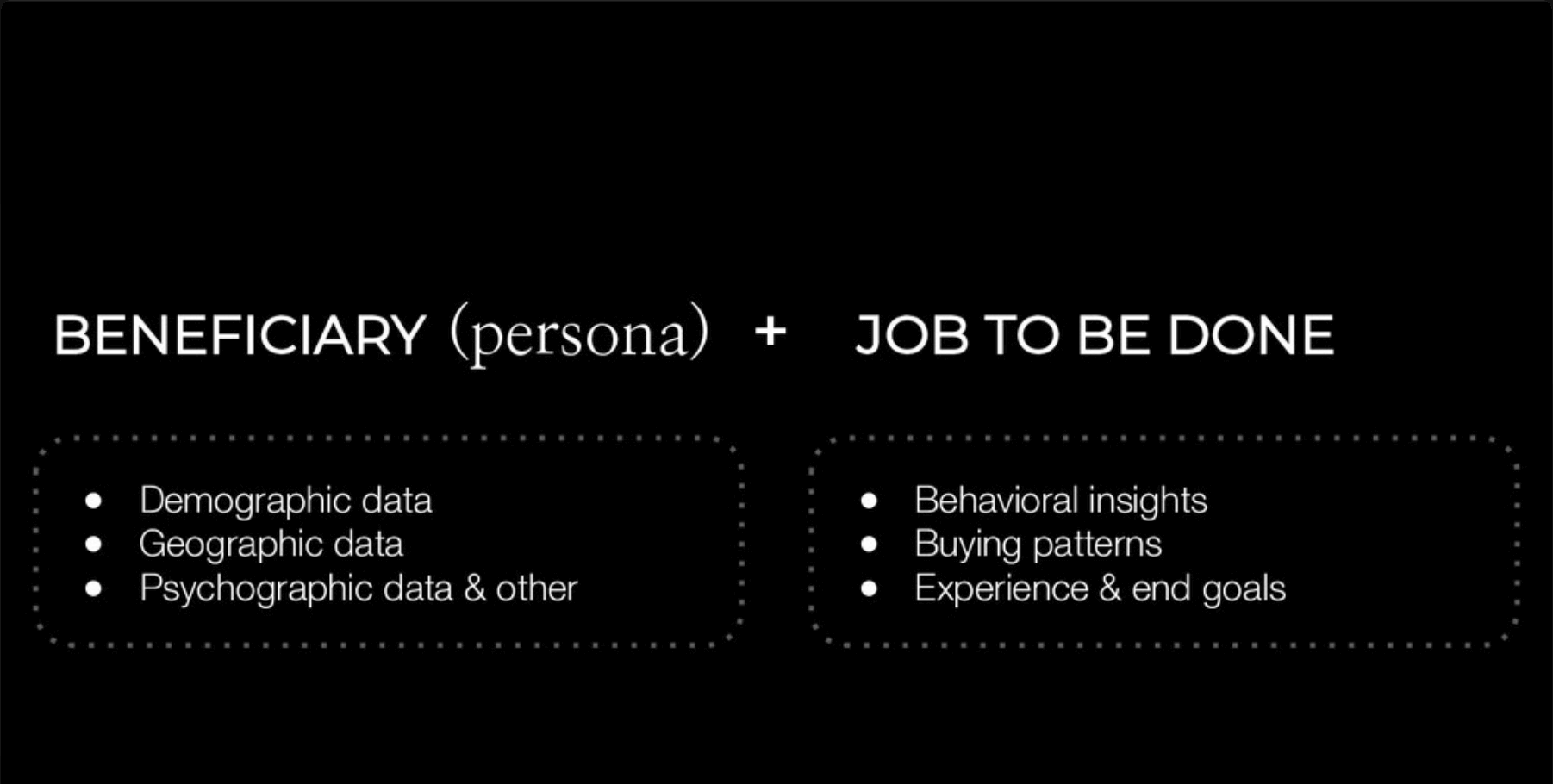
So please complement the two.
Journey map
This is another framework that's really interesting because just taking a step back from jobs to be done, your product managers will pretty much know what this framework is, they're going to be very grateful to have you talk to them in very similar methodologies.
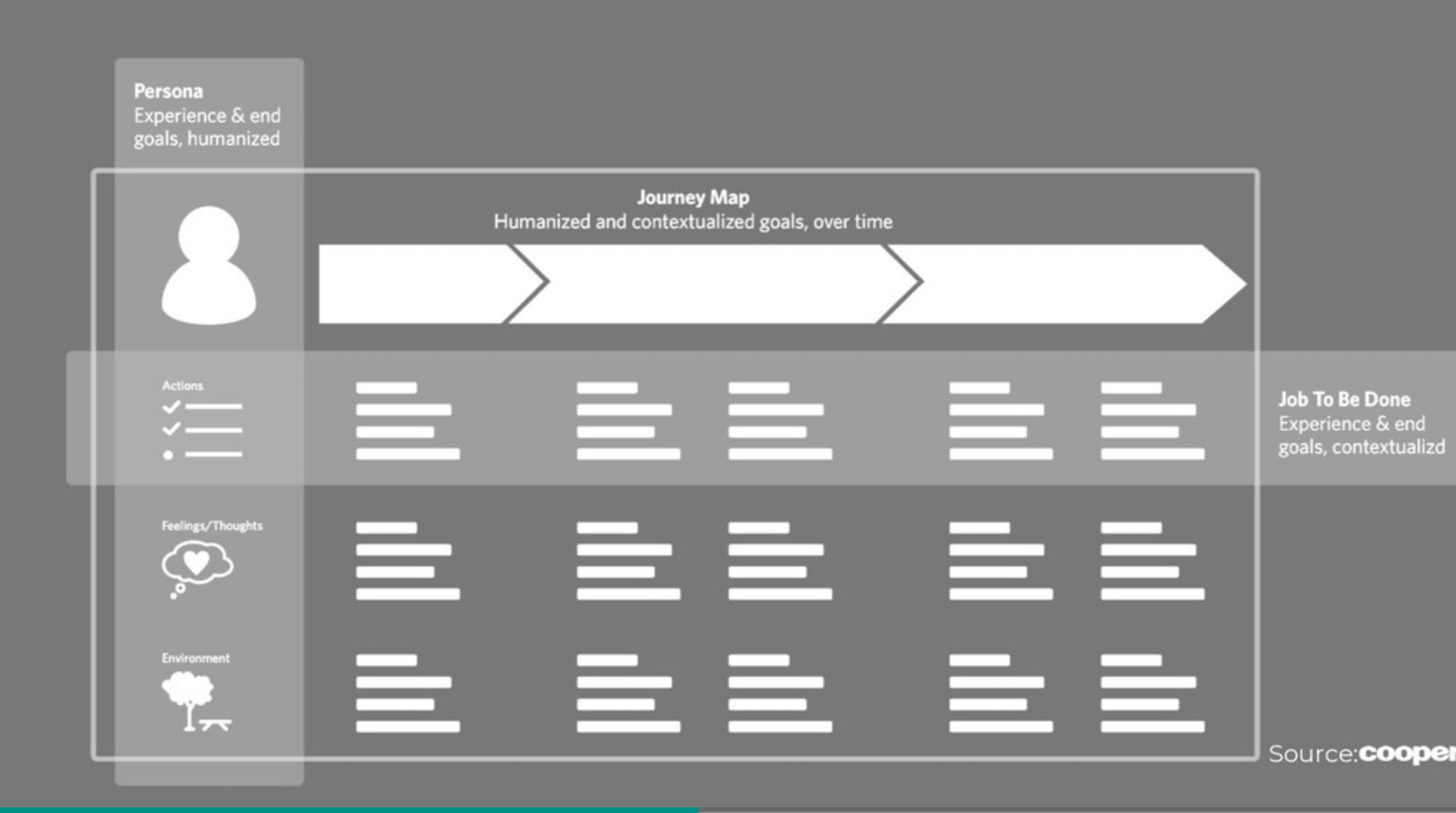
The persona gives you an X-ray of who you're actually targeting, the jobs to be done will describe what needs to get done, what their end goal is, and then you can contextualize that and loop that over the entire customer journey.
To summarise that, the jobs give you the functional outcome your persona is after, personas give you the human dimension, who you're building products for and who you're actually communicating to, and journeys give you the context and that is really, really important. That gets you thinking.
Jobs actually help you reframe your market and your competitors.
I'll give you an example.
Yesterday I was super tired and my Slack exploded midway through the day. People started messaging me, "I don't know what we're doing with this, what do you think about that?" My job at the end of the day was to change how I feel.
There are very different ways to do that. I could either go buy myself something nice, I could buy myself maybe some makeup just to feel a bit better, whatever, I could buy a McDonald's meal, which is exactly what I did, or I could just sort out my finances.
Jobs reframe your market & competitors
Hopefully, at this point it's coming across that you can satisfy the same job with multiple products or in multiple ways. I want to encourage you to not think of your competitors in the way you define them. Think of your perceived competitors, because that's exactly how your personas are going to see it.
How did we approach this?
For one of the products, which I cannot disclose, we approached it in a pretty expensive way. We did 3,000+ interviews, four markets, 75 needs that we highlighted, and a gazillion insights.
In this article, I'm hoping to share something you can take back to your team, it won't cost a lot, please partner with your Insights Manager with your research team, and try to put that in motion. Cost-free, relatively, but it's going to be really effective, I promise.
Beauty consumers don’t want AI chatbots
We found that beauty consumers don't want AI chatbots - we were really heartbroken.
Their job to be done was actually to look the way they want.
Equally, for our app users in the FinTech space, they don't want credit products.
They want to afford what they need, or what they want.
That changes things because you can tackle that problem in very different ways and communication can follow the lead on that.
Map out each stage and each step of the job
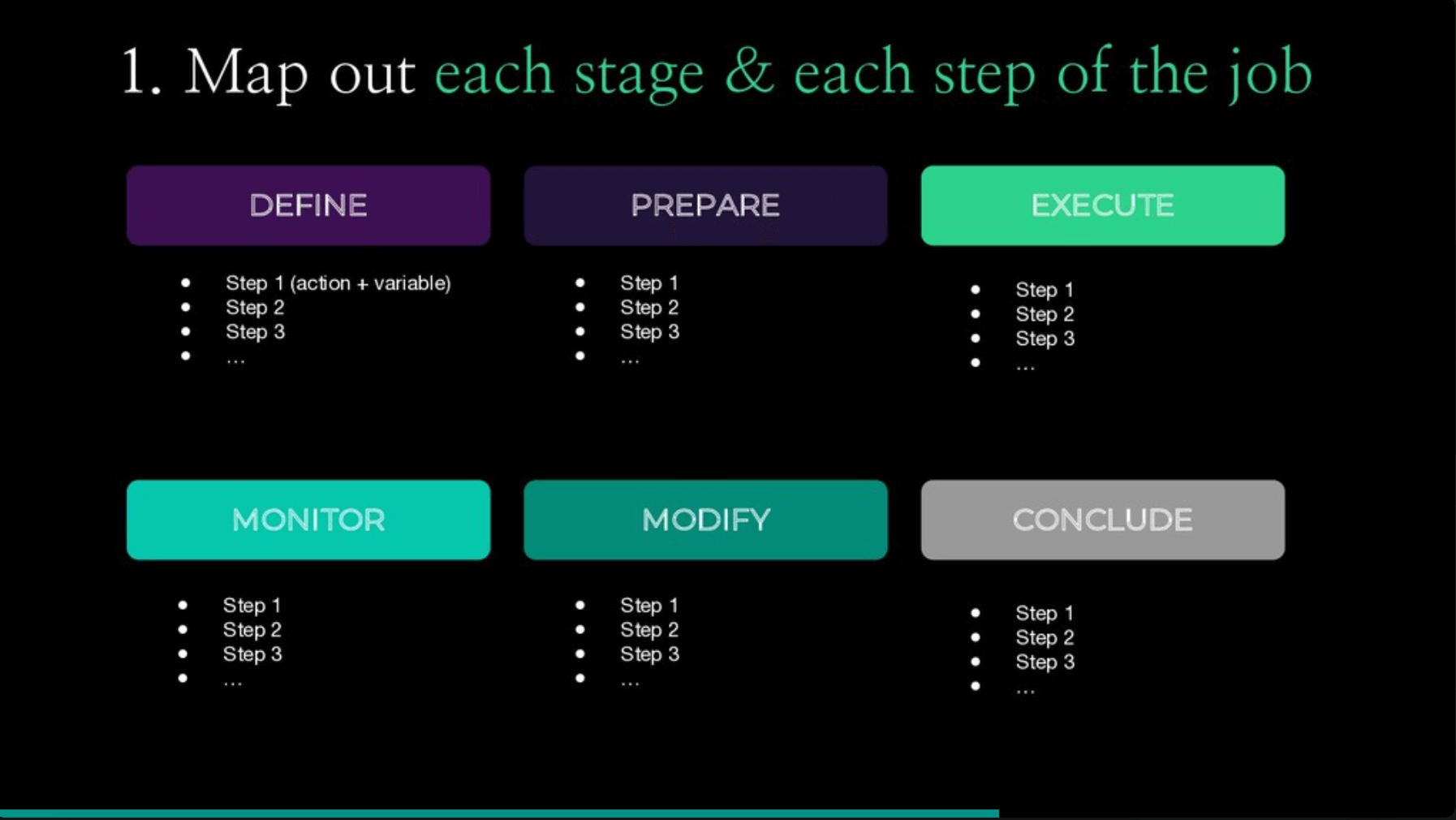
Step by step, we mapped out each stage and each step of the job, when a customer starts to think, "I need to do something. Let me figure out what solution I have".
They define the problem, they prepare for it, they execute on it, they monitor to see if everything went well, they modified and they concluded.
So to give you an example, yesterday, when I was looking for McDonald's, I tried to find "Well, I'm not feeling so well. I just want something nice to eat. Something that I can eat by myself and my boyfriend will not judge me".
I defined that, I prepared, went on Uber Eats, I executed it, I monitored, I checked every five minutes to see where my order was, I modified it and told the guy, "Please call me when you're downstairs" and then I concluded which was eating the food and watching some Netflix.
Calculate the opportunity score for each job step
For each of these stages, you put out the steps. One of the steps, as I said, was researching what options I have, what are the nearest restaurants or whatever. Moving forward for each of those steps, you calculate an opportunity score.
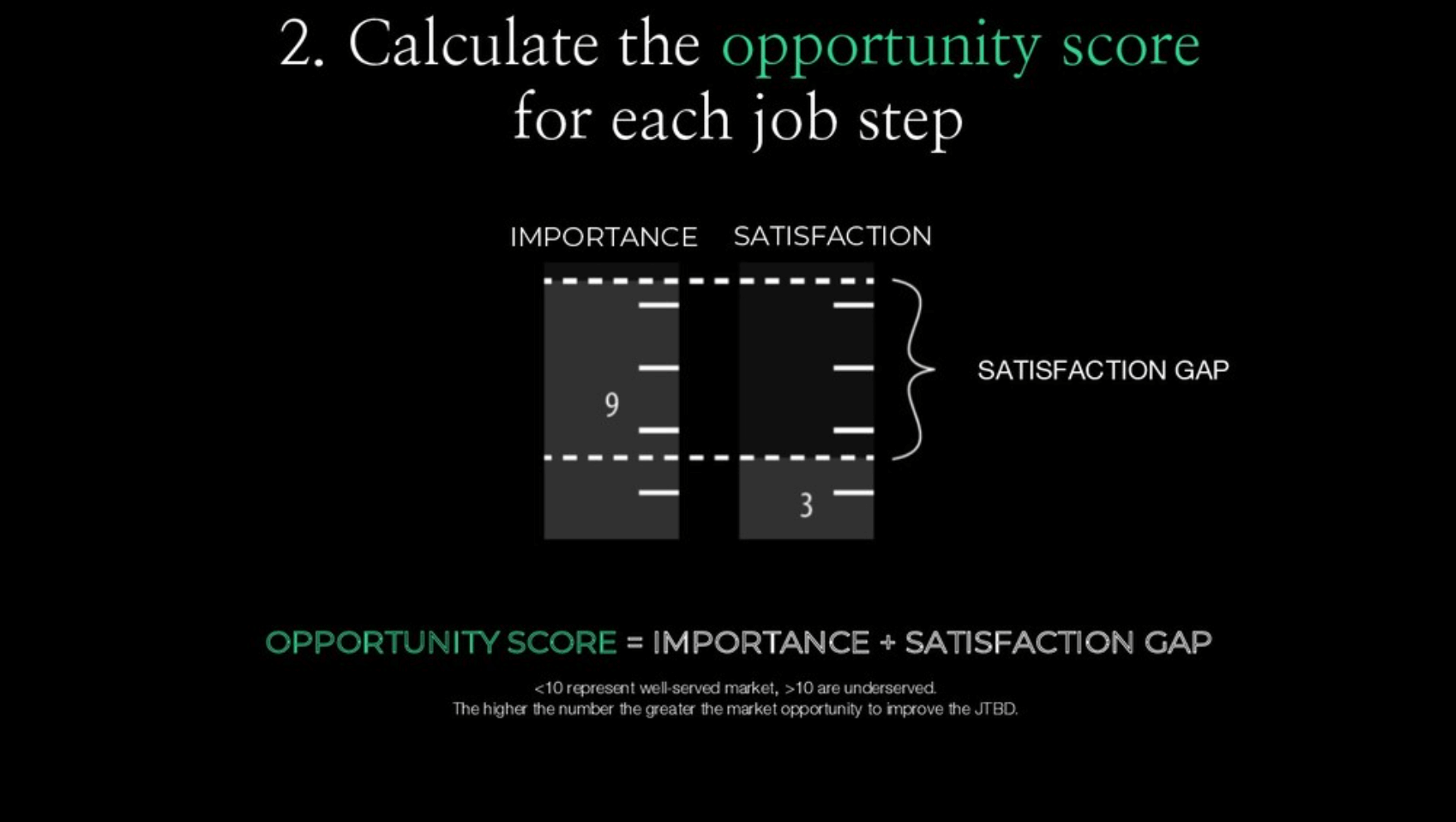
Essentially, each step has a nugget of opportunity for you. Through questionnaires or through interviews, you can assess the importance and the satisfaction.
- How important is it for that person to get that thing done?
- How satisfied are they with their current solutions?
That's how you identify a satisfaction gap. Your opportunity score becomes the importance plus that satisfaction gap.
Just to give you a preview, if the score is smaller than 10, don't bother. And if the score is higher than 10, you should probably start paying attention to that. That's really going to be powerful when you talk to your product manager and you do this together to identify what features should be next.
Select areas of opportunity
The third one is selecting areas of opportunity. For us, we identified the ones with the hearts are actually the ones that had the higher score, which is incredibly important.

We identified at this point where we can shine best, where we can excel, what the customer cares about most.
Organize the opportunity in themes
We then organized the opportunity in themes. In our case, we had something around self-perception, techniques, planning, personalization, deliberation, you name it, you'll figure it out.
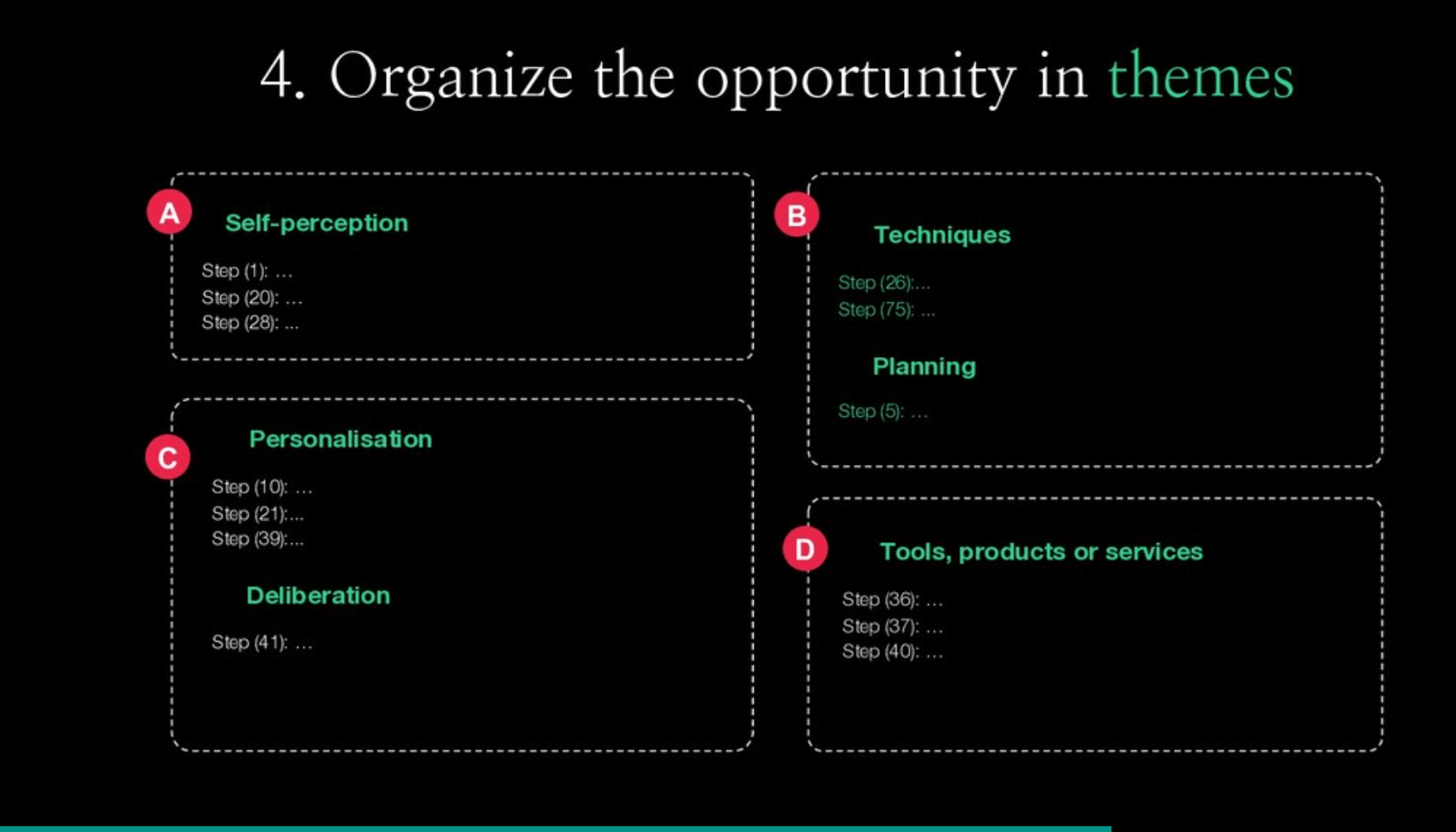
You'll see the themes that have the heart you put them in little themes together with your teams.
Ideate around the themes with product and other teams
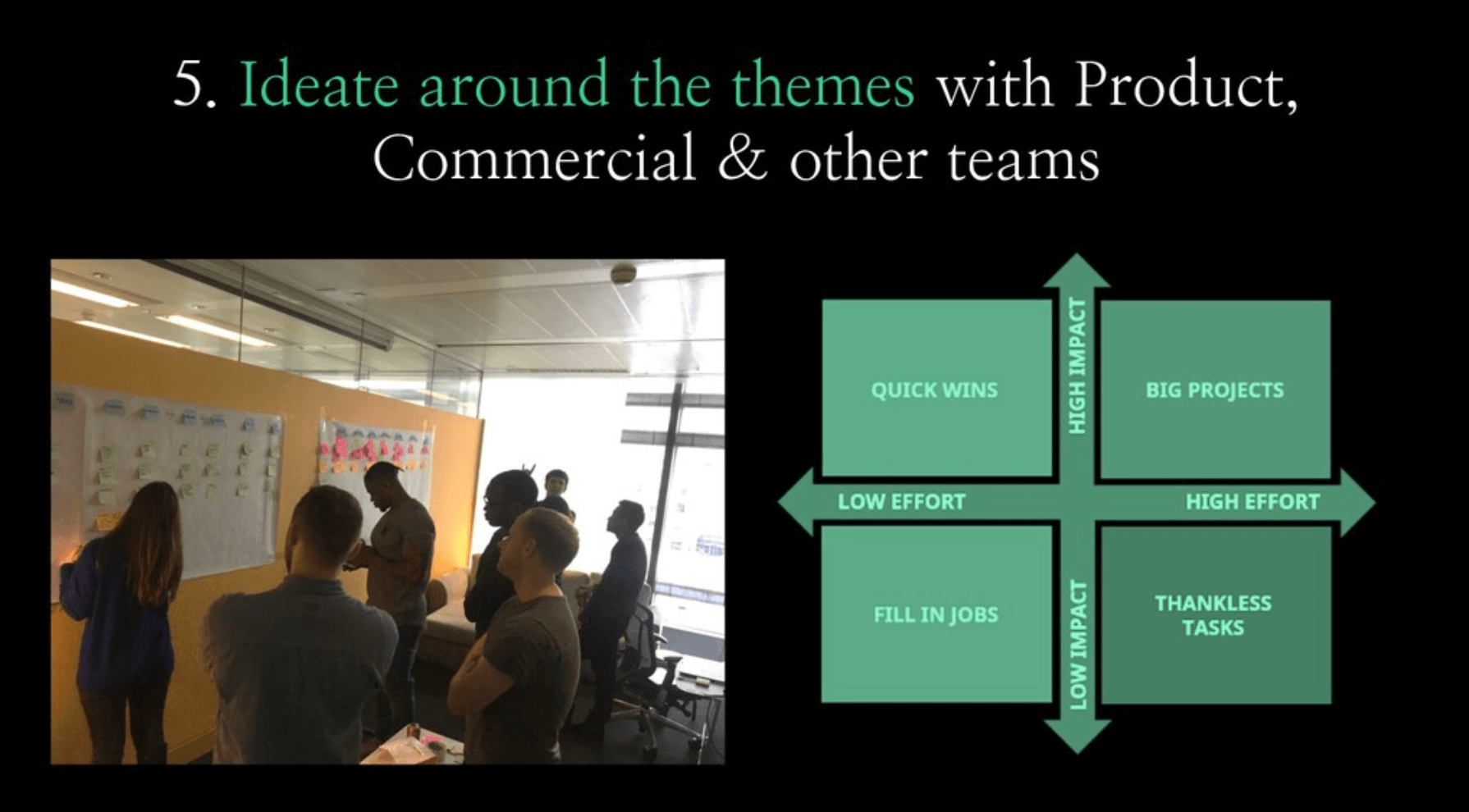
Then you start ideating into those themes with your product, commercial team, and whoever else you think is necessary over there.
For those that work in B2B that might look a bit different. For B2C we love partnering with our Insights Managers and with our market leads.
Once you have those themes and ideas, you can map them as to how hard they are to execute, and how much impact they actually have.
Identify your competitive edge
Where do you excel?
The beauty comes together in identifying your competitive edge.
When you start doing that in parallel with your competitors, it's not just a simple table anymore, you actually see it contextually across the entire journey, where you can add the most value, where you can actually shine, where you can differentiate.
It's a really interesting exercise. Of course, you can do it in tandem with those questionnaires I was talking about earlier but you can also do it internally, you can get a lot of insights already available for that.
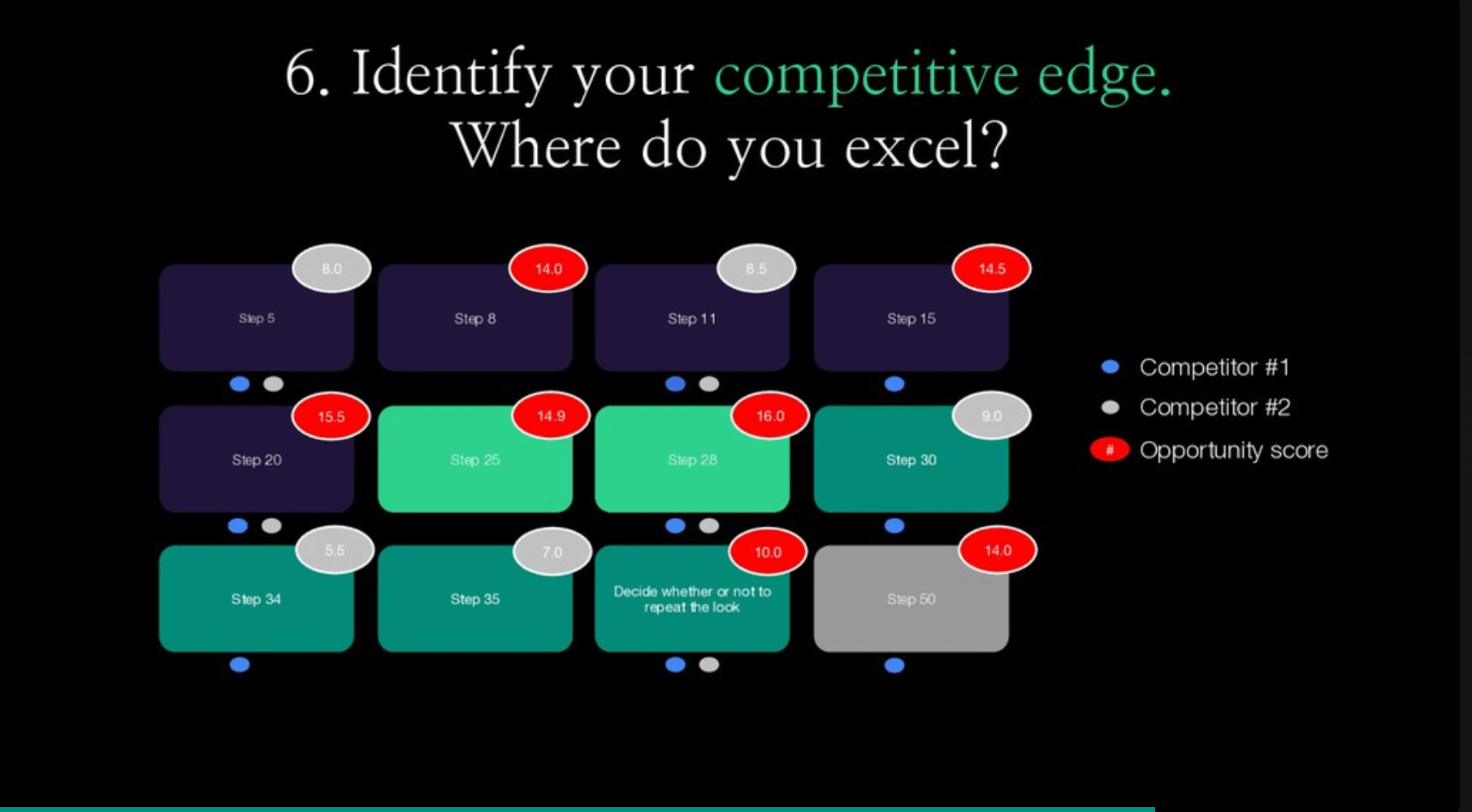
Select 3 underserved value propositions to test out with your personas
Then you basically select three underserved value propositions from all of those where you shine, where your score is higher, you test it out with your personas, and you'll be surprised to see the kind of insights you find.
We found really interesting stuff around that.
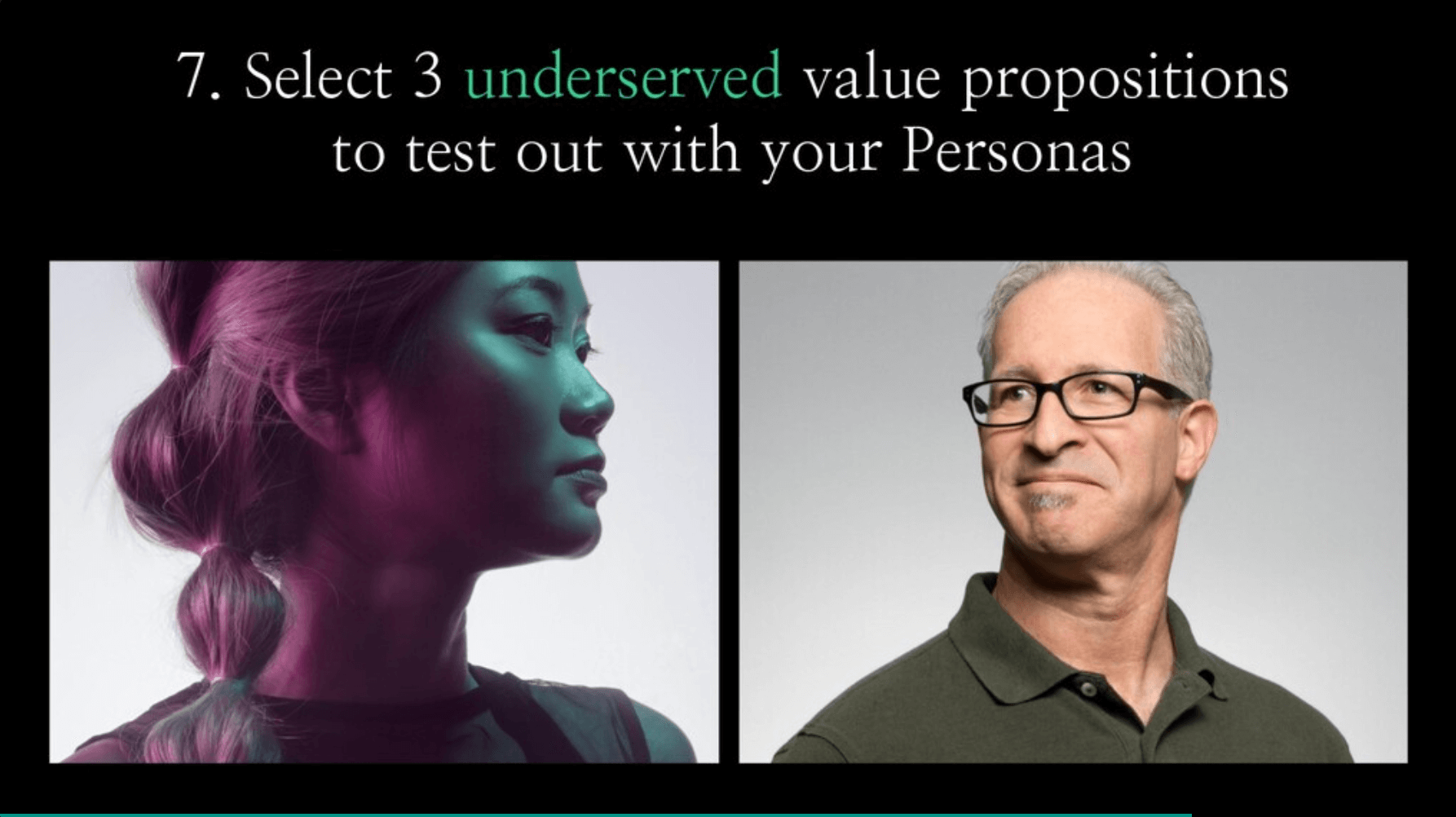
Craft your messaging and test, test, test
Then you craft your messaging based on the insights you get the persona as you alter a little bit your value proposition, you see how that trickles down and your positioning as I showed you with the competitors, and then craft your messaging test, test and again, I say test.

(Re)plan your go-to-market strategy
Then you start replanning your go-to-market strategy, you probably already have one but just to give you an indication, there are two dimensions here:
- Getting the job done better than your competitor or
- Getting it done pretty much the same.
But also being able to charge more or less.
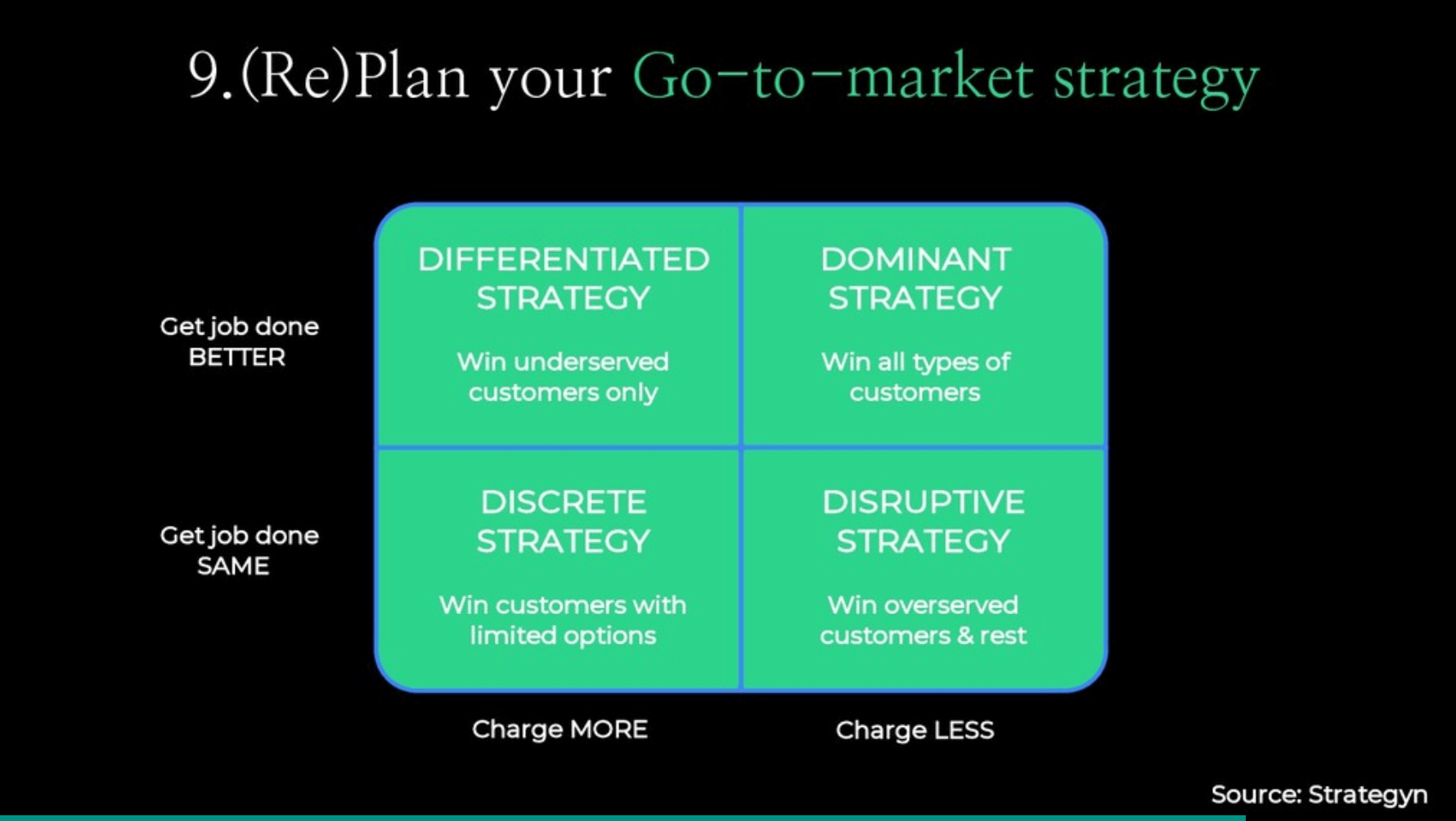
When you get the job done better, and you charge more, you basically just go for a differentiated strategy. So you win your underserved customers only.
Obviously, the winning solution is to get the job done better and charge less, because that's when you actually dominate the market and you win everybody.
That's not always the case, that shouldn't be the strategy for everybody and that's totally fine. But it has proven to be incredibly effective in terms of building that bridge of communication with product management, and also setting expectations.
The balance between personas and jobs
Have you ever had this happen to you where a product manager comes to you like, "We're not really talking enough about our products" And we're like, "Really? Tell me how it's different. Tell me what can I possibly do at this point? You're doing the job exactly the same way as your competitor, what are we gonna do?"
You need to do something on the product side and this is a great conversation starter between you and the product, where you don't pass the hot potato anymore, you actually start building solutions, you actually start understanding what you can do in the short term versus the long term.
Why is it important to find the balance between personas and jobs?
Personas > Jobs
BIC pens for women
I don't know if anyone remembers the Bic pens for women? If you don't, go on Amazon and look it up, it's hilarious how many people mock it.
If anyone reading is from Bic I love you guys, I'm so sorry, you've been doing a great job for all these years. This one has been spectacular.
If you go there, essentially, you see a product designed for women, a pen that is pink for some reason. But all I need to do is get something written down. That's all I need to do.
There's no need to emphasize that I'm a woman and make the pen pink for me. It's fine. I can write with a blue pen.
This is what happens when you overemphasize the personas and you forget about the functional side. You overemphasize the unimportant and you're at risk of having something that's quite biased and quite prejudiced.
(Genuinely go on Amazon and check this out, I laughed for half an hour.)
Equally, with jobs on the other side, if you forget the emotional and the social needs, and become too functional and too cold that's also a risk you want to stay away from.
Because then you're literally undifferentiated, and it just becomes a really sad story.
This is the outline.
Key takeaways
Do your business-as-usual work on personas, but enrich it.
- Map out each stage and each step of the job
- Calculate the opportunity score for each job step
- Select areas of opportunity
- Organize the opportunity in themes
- Ideate around the themes with your team
- Identify your competitive edge. Where do you excel?
- Select 3 underserved value propositions and test them with your personas
- Craft your message and TEST
- (Re)Plan your GTM strategy
Thank you.




